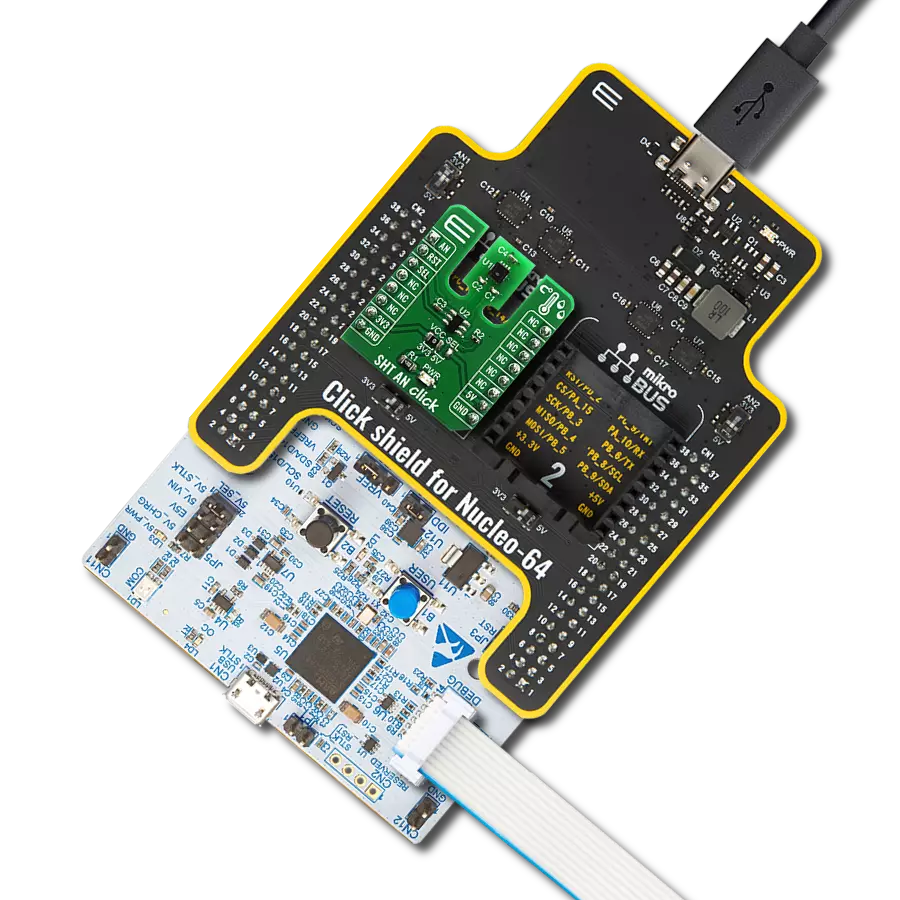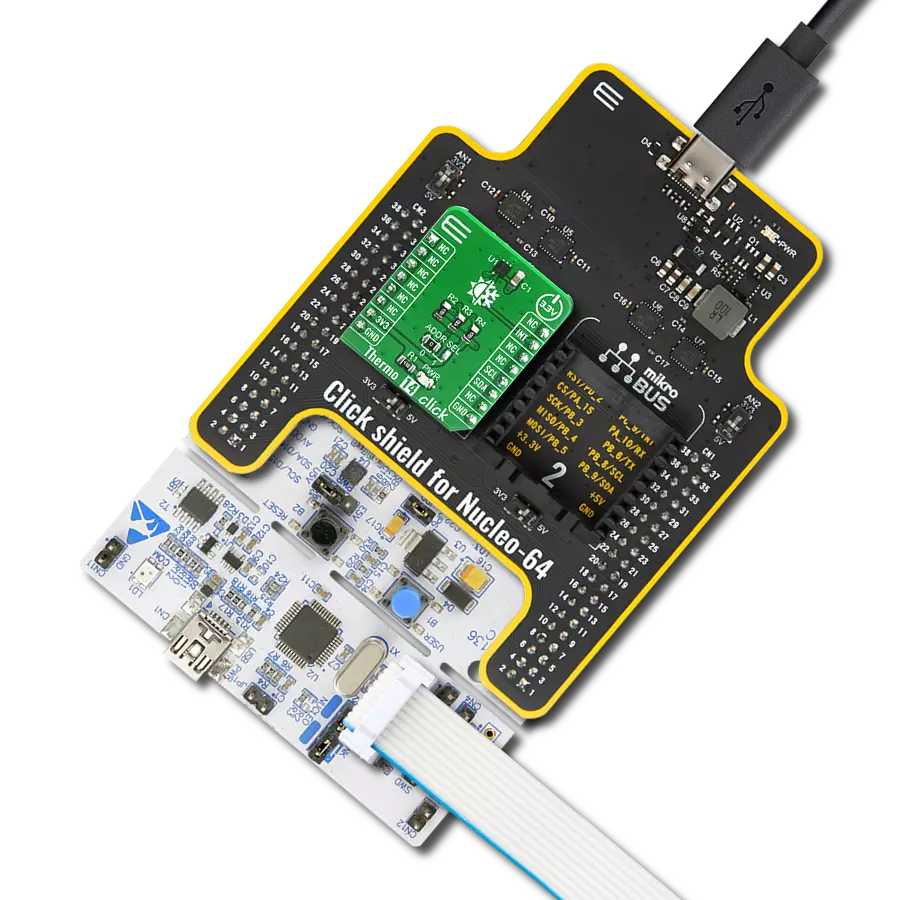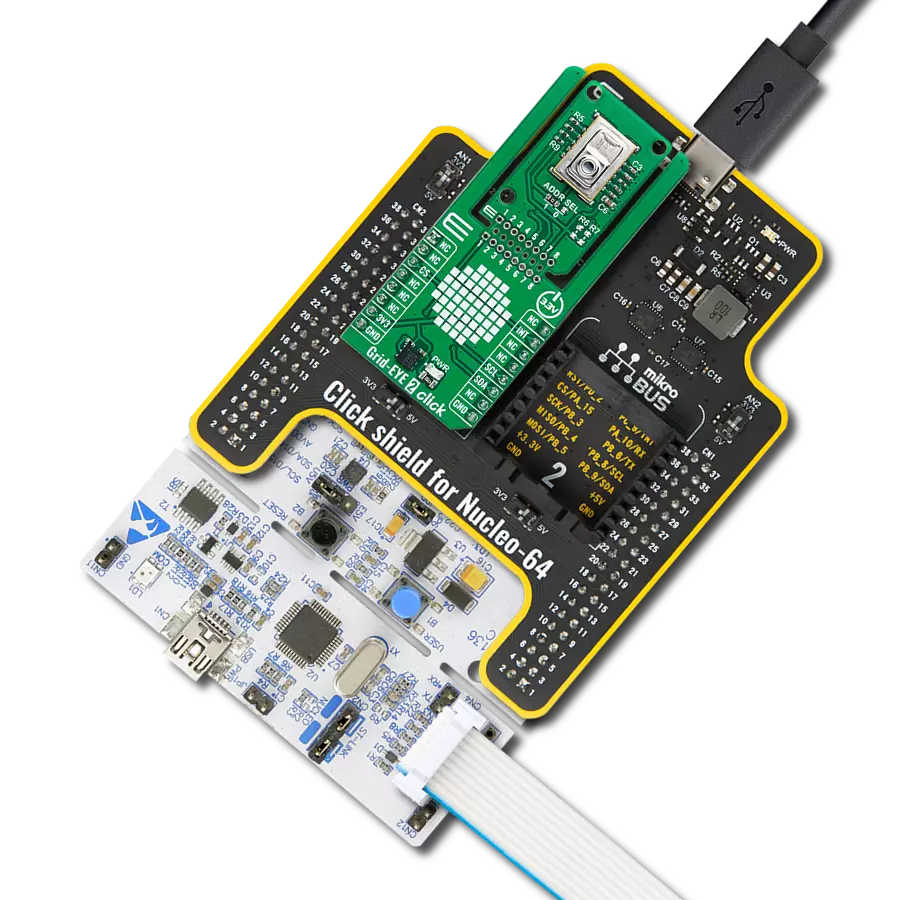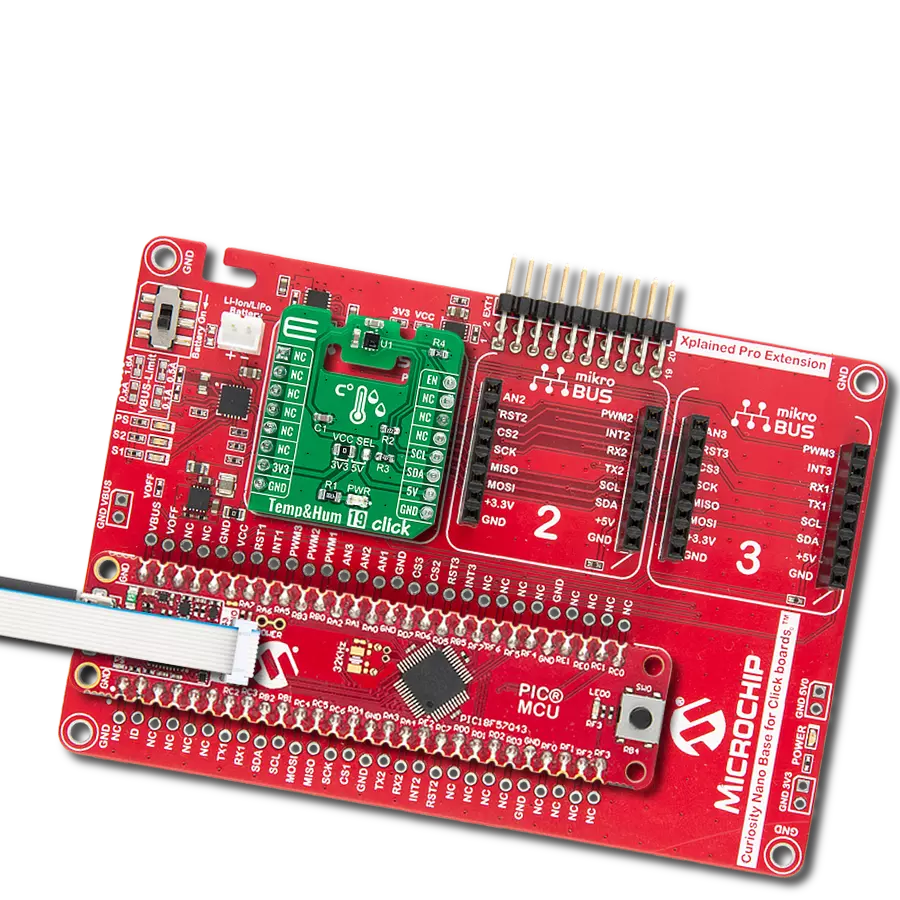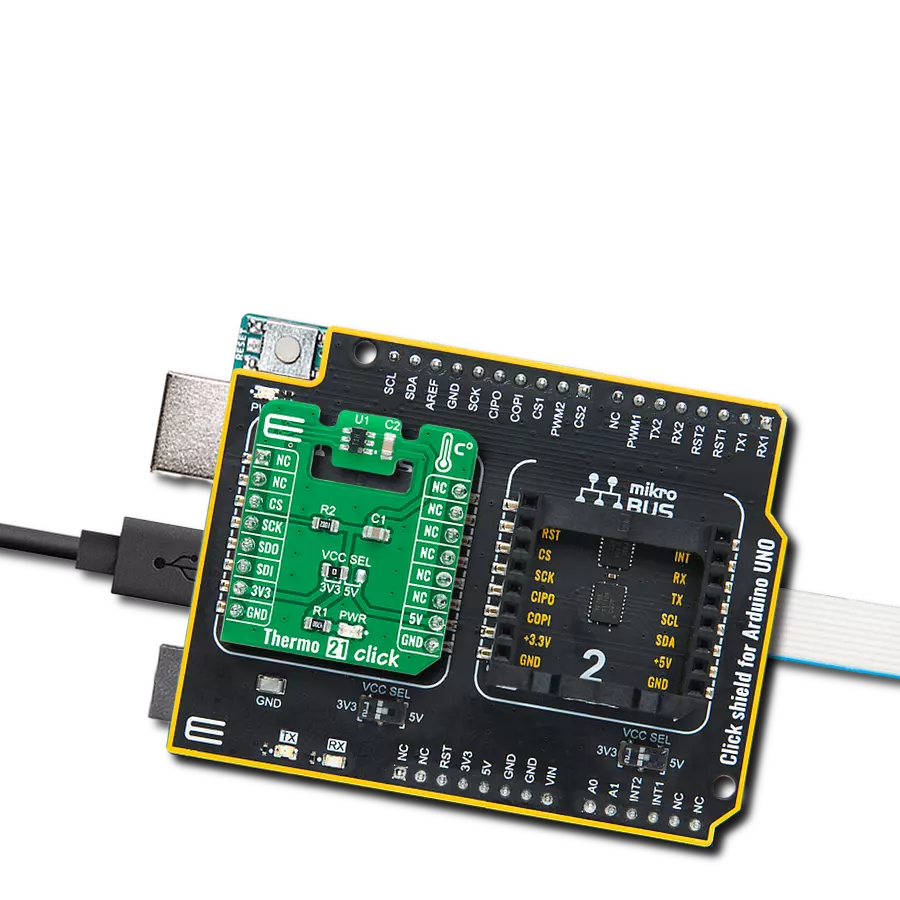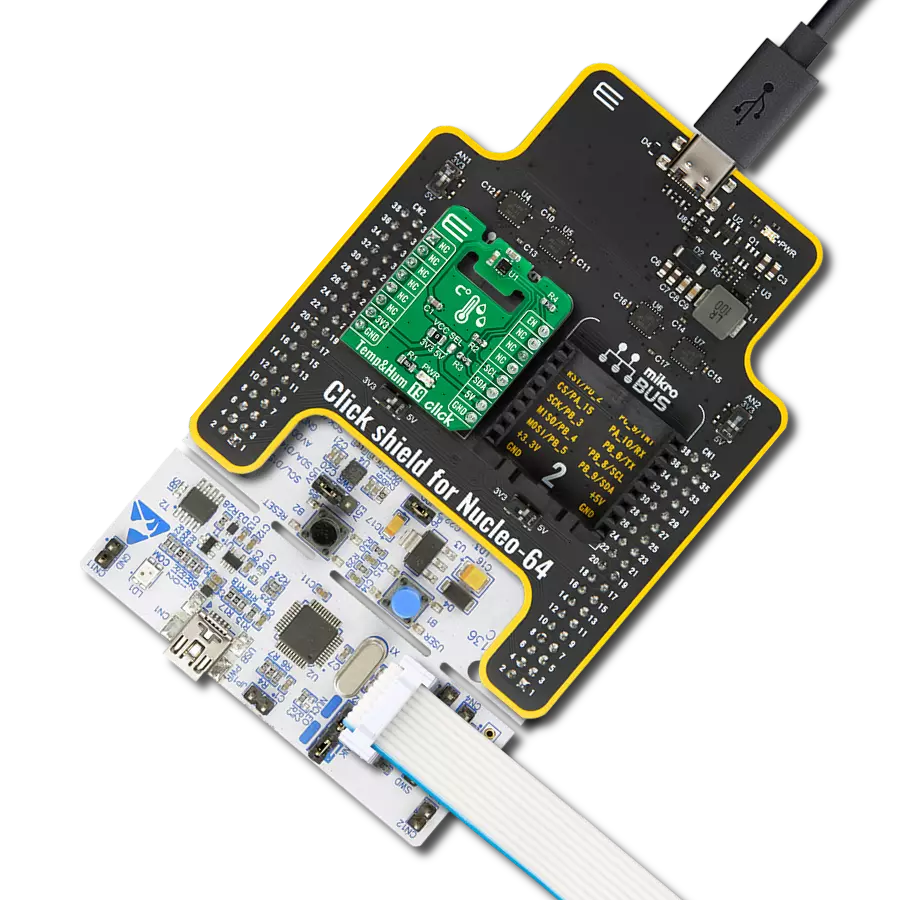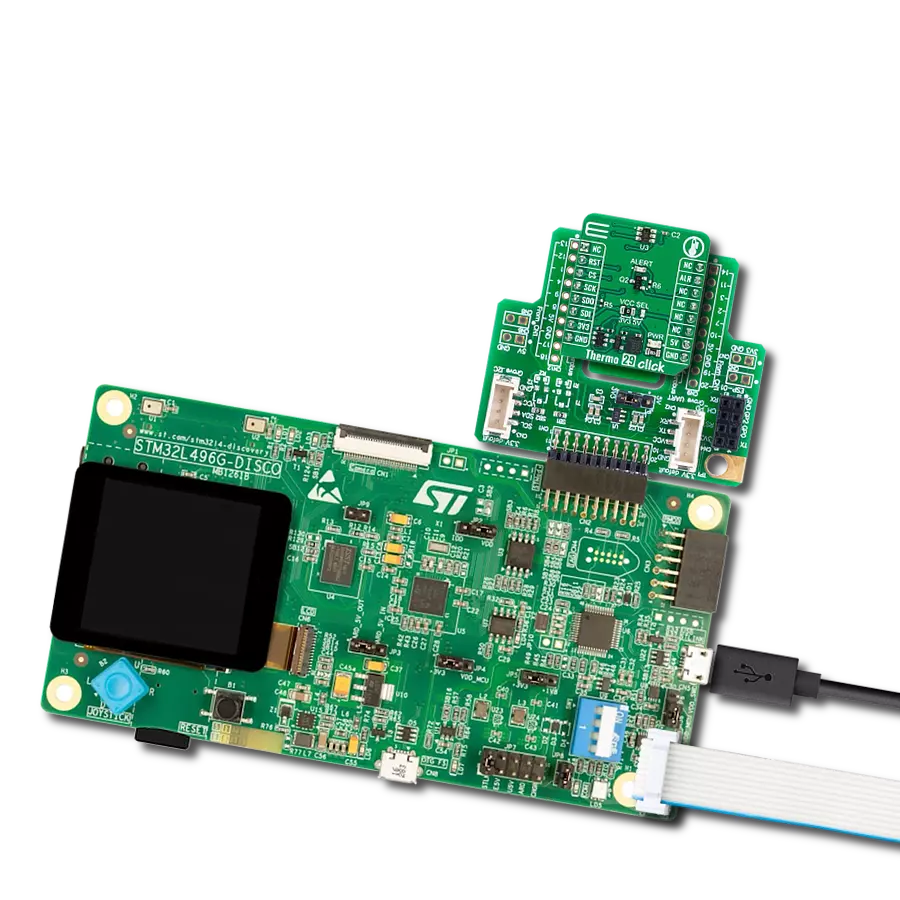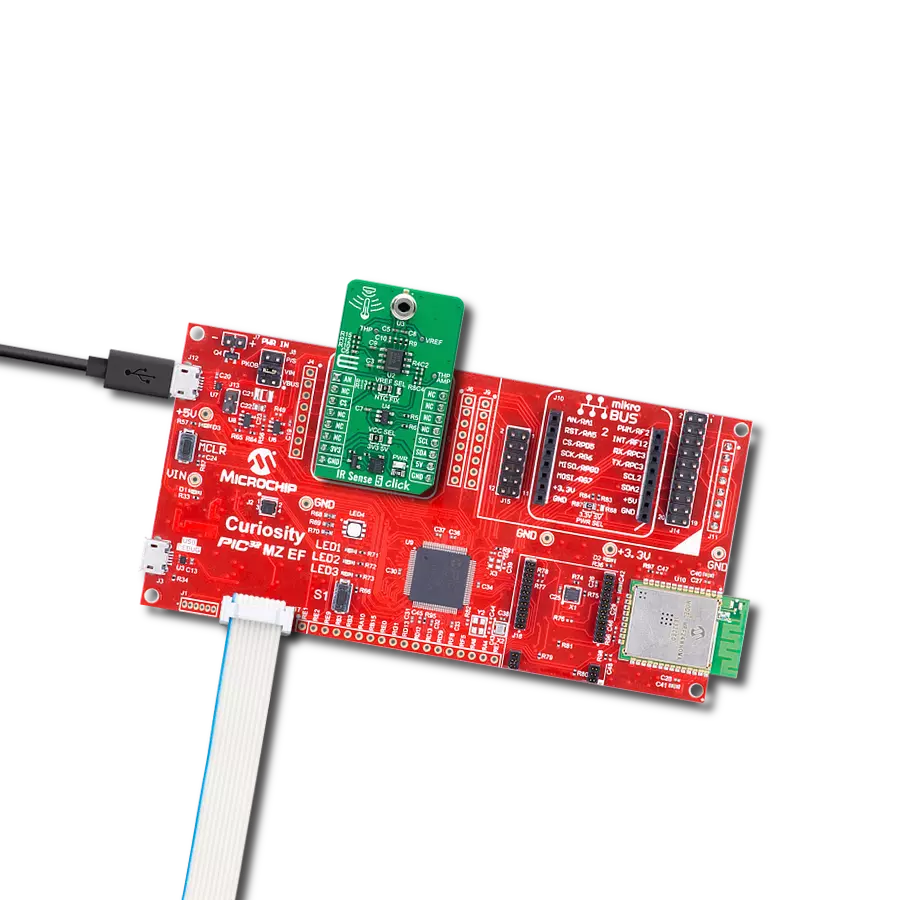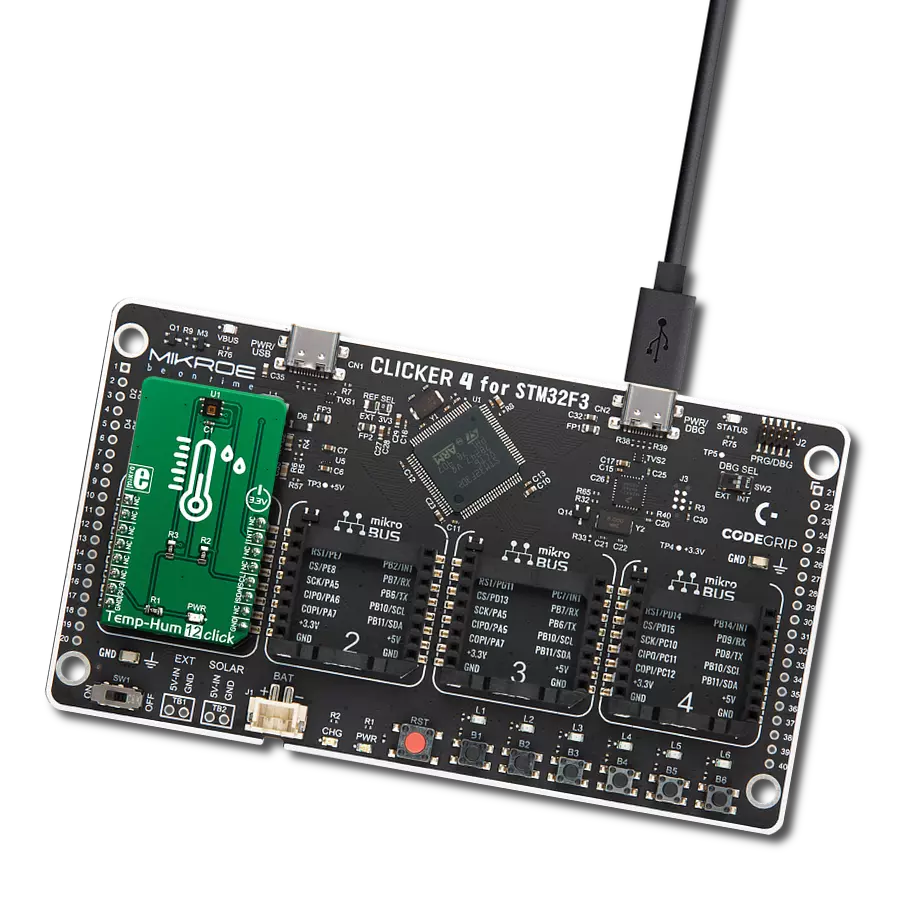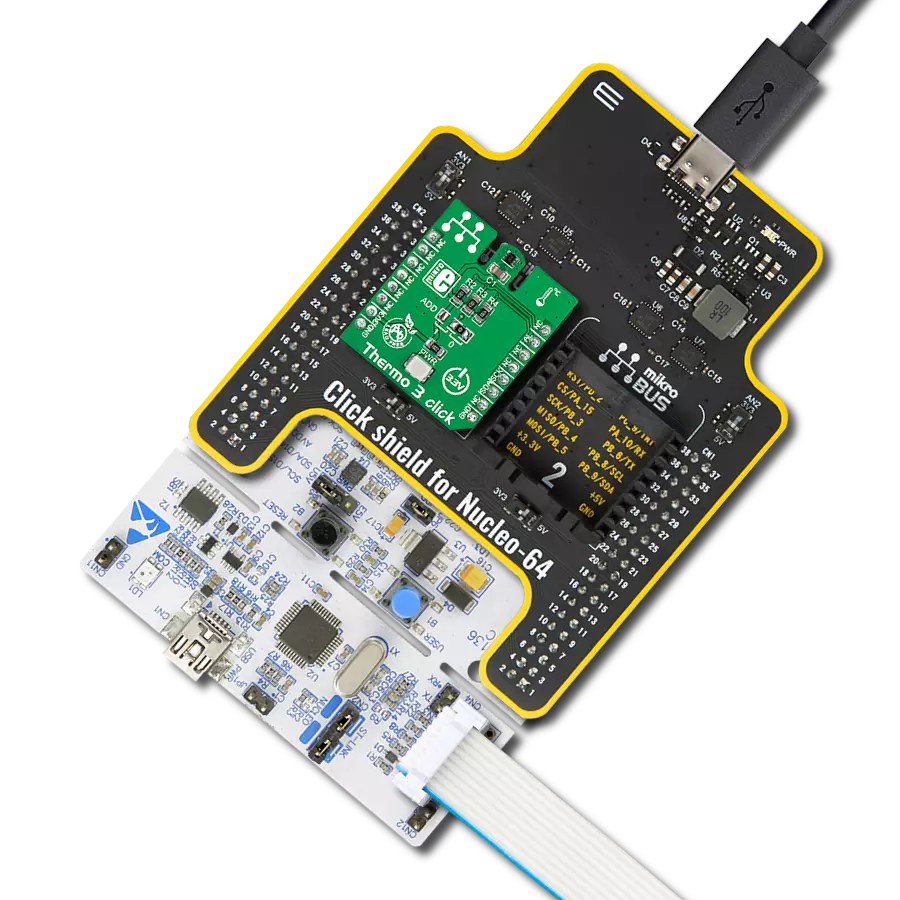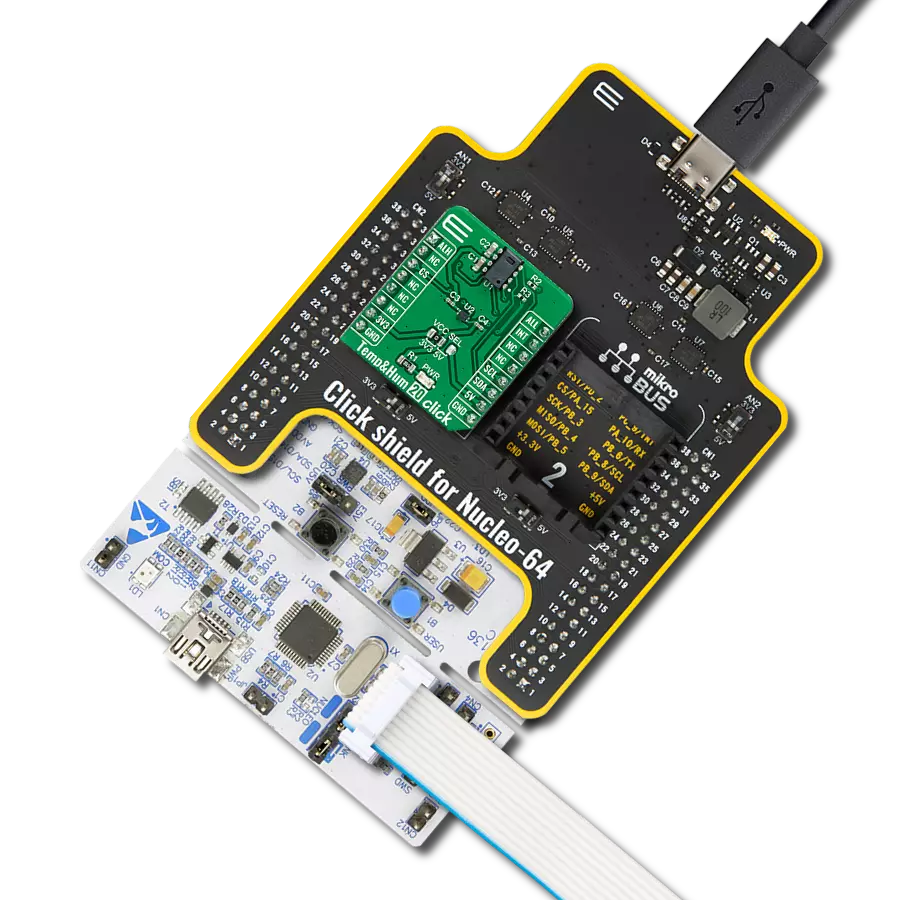Isolated temperature monitoring in high-voltage environments, ideal for HV battery systems, power electronics, and industrial applications
A
A
Hardware Overview
How does it work?
Temp ISO Click is based on the ISOTMP35-Q1, an automotive-grade isolated temperature sensor with analog output from Texas Instruments. This sensor is the first of its kind to integrate an isolation barrier with a withstand voltage of up to 3000VRMS, along with a temperature sensor that provides a linear analog output proportional to temperature, offering a slope of 10mV/°C across a wide range of –40°C to 150°C. This Click board™ can achieve precise, isolated temperature measurements while simplifying the design and reducing costs in high-voltage environments. It is an essential tool for applications such as HV battery management systems, high-voltage switching circuits, and thermal protection of power electronics. The ISOTMP35-Q1 enables accurate temperature measurements directly at high-voltage heat sources such as HV FETs, IGBTs, or contactors without requiring additional isolation circuitry. This design minimizes thermal lag, delivering faster and more precise thermal responses compared to traditional setups where the sensor must be placed farther
from the heat source to meet isolation requirements. These capabilities make it ideal for applications in high-voltage environments and battery systems with stacked configurations for high voltage output. This sensor features a robust UL 1577-compliant isolation barrier that ensures long-term reliability, supporting an isolation barrier life exceeding 50 years. It is also AEC-Q100 qualified, with HBM ESD classification level 2 and CDM ESD classification level C5, making it highly suitable for demanding automotive and industrial applications. The sensor delivers a maximum temperature accuracy of ±2.0°C and provides a rapid thermal response due to its optimized package design, which ensures excellent heat flow and minimizes thermal mass. This Click board™ is designed in a unique format supporting the newly introduced MIKROE feature called "Click Snap." Unlike the standardized version of Click boards, this feature allows the main sensor area to become movable by breaking the PCB, opening up many new possibilities for implementation. Thanks to the
Snap feature, the ISOTMP35-Q1 can operate autonomously by accessing its signals directly on the pins marked 1-8. Additionally, the Snap part includes a specified and fixed screw hole position, enabling users to secure the Snap board in their desired location. The ISOTMP35-Q1 outputs a linear analog voltage that is proportional to temperature, allowing easy integration with the host MCU through the AN pin of the mikroBUS™ socket. The high accuracy and fast response time of this Click board™ make it an excellent choice for monitoring high-voltage components, enabling improved safety in automotive and industrial systems. This Click board™ can operate with either 3.3V or 5V logic voltage levels selected via the VCC SEL jumper. This way, both 3.3V and 5V capable MCUs can use the communication lines properly. Also, this Click board™ comes equipped with a library containing easy-to-use functions and an example code that can be used as a reference for further development.
Features overview
Development board
6LoWPAN Clicker is a compact starter development board that brings the flexibility of add-on Click boards™ to your favorite microcontroller, making it a perfect starter kit for implementing your ideas. It comes with an onboard 32-bit PIC microcontroller, the PIC32MX470F512H from Microchip, a USB connector, LED indicators, buttons, a mikroProg connector, and a header for interfacing with external electronics. Along with this microcontroller, the board also contains a 2.4GHz ISM band transceiver, allowing you to add wireless communication to your target application. Its compact design provides a fluid and immersive working experience, allowing access anywhere
and under any circumstances. Each part of the 6LoWPAN Clicker development kit contains the components necessary for the most efficient operation of the same board. In addition to the possibility of choosing the 6LoWPAN Clicker programming method, using USB HID mikroBootloader, or through an external mikroProg connector for PIC, dsPIC, or PIC32 programmer, the Clicker board also includes a clean and regulated power supply module for the development kit. The USB Micro-B connection can provide up to 500mA of current for the Clicker board, which is more than enough to operate all onboard and additional modules, or it can power
over two standard AA batteries. All communication methods that mikroBUS™ itself supports are on this board, including the well-established mikroBUS™ socket, reset button, and several buttons and LED indicators. 6LoWPAN Clicker is an integral part of the Mikroe ecosystem, allowing you to create a new application in minutes. Natively supported by Mikroe software tools, it covers many aspects of prototyping thanks to a considerable number of different Click boards™ (over a thousand boards), the number of which is growing every day.
Microcontroller Overview
MCU Card / MCU
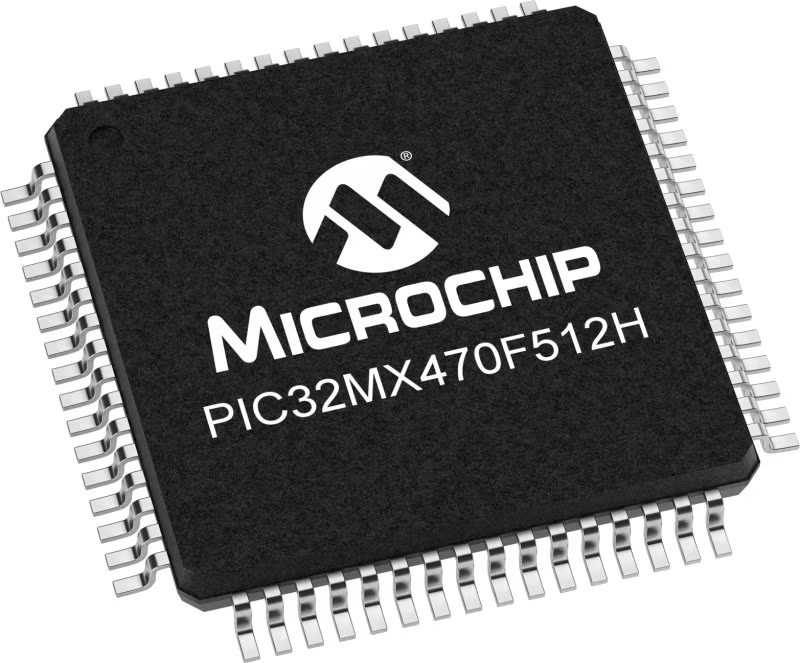
Architecture
PIC32
MCU Memory (KB)
512
Silicon Vendor
Microchip
Pin count
64
RAM (Bytes)
131072
Used MCU Pins
mikroBUS™ mapper
Take a closer look
Click board™ Schematic

Step by step
Project assembly
Track your results in real time
Application Output
1. Application Output - In Debug mode, the 'Application Output' window enables real-time data monitoring, offering direct insight into execution results. Ensure proper data display by configuring the environment correctly using the provided tutorial.

2. UART Terminal - Use the UART Terminal to monitor data transmission via a USB to UART converter, allowing direct communication between the Click board™ and your development system. Configure the baud rate and other serial settings according to your project's requirements to ensure proper functionality. For step-by-step setup instructions, refer to the provided tutorial.

3. Plot Output - The Plot feature offers a powerful way to visualize real-time sensor data, enabling trend analysis, debugging, and comparison of multiple data points. To set it up correctly, follow the provided tutorial, which includes a step-by-step example of using the Plot feature to display Click board™ readings. To use the Plot feature in your code, use the function: plot(*insert_graph_name*, variable_name);. This is a general format, and it is up to the user to replace 'insert_graph_name' with the actual graph name and 'variable_name' with the parameter to be displayed.

Software Support
Library Description
This library contains API for Temp ISO Click driver.
Key functions:
tempiso_read_temperature- This function reads the voltage level from AN pin and converts it to temperature in degrees Celsius.tempiso_read_voltage_avg- This function reads a desired number of ADC samples and calculates the average voltage level.tempiso_set_vref- This function sets the voltage reference for Temp ISO click driver.
Open Source
Code example
The complete application code and a ready-to-use project are available through the NECTO Studio Package Manager for direct installation in the NECTO Studio. The application code can also be found on the MIKROE GitHub account.
/*!
* @file main.c
* @brief Temp ISO Click Example.
*
* # Description
* This example demonstrates the use of Temp ISO Click board by reading
* and displaying the temperature measurements.
*
* The demo application is composed of two sections :
*
* ## Application Init
* Initializes the driver and logger.
*
* ## Application Task
* Reads the temperature measurement in degrees Celsius and displays
* the results on the USB UART approximately once per second.
*
* @author Stefan Filipovic
*
*/
#include "board.h"
#include "log.h"
#include "tempiso.h"
static tempiso_t tempiso; /**< Temp ISO Click driver object. */
static log_t logger; /**< Logger object. */
void application_init ( void )
{
log_cfg_t log_cfg; /**< Logger config object. */
tempiso_cfg_t tempiso_cfg; /**< Click config object. */
/**
* Logger initialization.
* Default baud rate: 115200
* Default log level: LOG_LEVEL_DEBUG
* @note If USB_UART_RX and USB_UART_TX
* are defined as HAL_PIN_NC, you will
* need to define them manually for log to work.
* See @b LOG_MAP_USB_UART macro definition for detailed explanation.
*/
LOG_MAP_USB_UART( log_cfg );
log_init( &logger, &log_cfg );
log_info( &logger, " Application Init " );
// Click initialization.
tempiso_cfg_setup( &tempiso_cfg );
TEMPISO_MAP_MIKROBUS( tempiso_cfg, MIKROBUS_1 );
if ( ADC_ERROR == tempiso_init( &tempiso, &tempiso_cfg ) )
{
log_error( &logger, " Communication init." );
for ( ; ; );
}
log_info( &logger, " Application Task " );
}
void application_task ( void )
{
float temperature = 0;
if ( TEMPISO_OK == tempiso_read_temperature ( &tempiso, &temperature ) )
{
log_printf( &logger, " Temperature: %.1f degC\r\n\n", temperature );
Delay_ms ( 1000 );
}
}
int main ( void )
{
/* Do not remove this line or clock might not be set correctly. */
#ifdef PREINIT_SUPPORTED
preinit();
#endif
application_init( );
for ( ; ; )
{
application_task( );
}
return 0;
}
// ------------------------------------------------------------------------ END
Additional Support
Resources
Category:Temperature & humidity


















